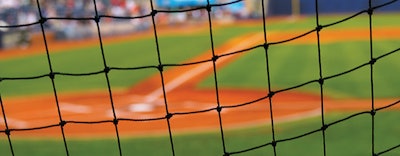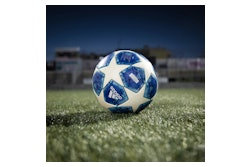
In product liability cases, it is not unusual for there to be multiple parties involved in a single lawsuit. When equipment is supplied to a sports facility for the purposes of enhancing user or fan safety, and someone is nonetheless injured, the injured party will likely sue the product manufacturer, the facility and anyone else involved.
In cases with multiple defendants, most states apply a comparative negligence theory. Under comparative negligence, the jury is required to assign degrees of fault to each of the parties involved in the lawsuit, including the plaintiff. If damages are awarded, the plaintiff's proportion of fault is then deducted from any award. A good example of one such case is Camlin v. Office of Commissioner of Baseball, 2020 WL 3887993 (Pa. Super. Ct. July 10, 2020).
Netting deflection
While attending a Pittsburgh Pirates game at PNC Park in April 2015, Wendy Camlin was struck on the back of her head by a foul ball. Camlin's seat was in the first row directly behind home plate, and even though the Pirates had a policy to not seat patrons during live play and to warn every patron of the dangers posed by the netting when sitting in the first row, a team employee escorted Camlin to her seat as live play was in progress.
Camlin moved toward her seat with her attention focused on the ground to avoid stepping on the feet of the other spectators, and she was facing away from the field of play when a foul ball struck the netting behind home plate. At the time the ball was hit into the netting, it was estimated that Camlin's head was 3 1/2 to 6 inches from the net.
As a result of her injury, Camlin had trouble with her focus and concentration and suffered short-term memory loss. Because of her inability to meet the intensive time commitments and complex demands of her position as director of Patient Care for Obstetrics and Newborn Services at the University of Pittsburgh Medical Center, she was unable to return to her job.
Camlin filed a lawsuit in Allegheny County against the Office of the Commissioner of Baseball, doing business as Major League Baseball ("MLB"); the Sports and Exhibition Authority of Pittsburgh and Allegheny County ("SEA"); the Pittsburgh Associates LP, doing business as the Pittsburgh Pirates ("Pirates"); and Promats Athletics LLC.
The complaint alleged that the Pirates, the SEA and MLB "acted negligently in their breach of the duty to minimize the risk of injury to spectators or patrons at events held at PNC Park." In addition, Camlin alleged Promats, which had replaced the protective netting behind home plate approximately 17 days prior to the accident, was negligent because it knew or should have known that the design, manufacture, production, marketing, installation and/or maintenance of the replacement netting could allow for a situation in which a batted ball deflects the netting enough to come into contact with a spectator.
Prior to trial, all parties agreed to dismiss the complaint against MLB, as there was no evidence that MLB played a role in the injuries sustained by Camlin. Additionally, Camlin confidentially settled with the Pirates and the SEA. The Pirates and the SEA, however, remained on the verdict slip for the jury to consider, but in effect the lawsuit was now between Camlin and Promats.
After a 10-day trial, the jury found that the already-settled defendants — the Pirates and the SEA — were each 47.5 percent responsible for Camlin's injuries, while Camlin was 5 percent liable for her own injuries. The jury awarded Camlin $454,000, an award rendered moot by the fact Camlin had already settled with the Pirates and the SEA.
As for Promats, the jury concluded that the company bore no responsibility for Camlin's injuries.
Believing that Promats was at least partially responsible for her injuries, Camlin challenged the jury's finding to the Superior Court of Pennsylvania. Camlin argued that because Promats held itself as an "expert" in ballpark safety products, it owed her a heightened duty of care. She further argued that Promats completely neglected its duties under Pennsylvania law to warn the Pirates and spectators that the netting it had installed created a false illusion of safety and a hidden danger to its users.
 At the time the ball was hit into the netting, it was estimated that Camlin's head was 3 1/2 to 6 inches from the net.
At the time the ball was hit into the netting, it was estimated that Camlin's head was 3 1/2 to 6 inches from the net.
Inappropriate standard of care
In reviewing Camlin's argument that Promats owed her a higher standard of care because it held itself as an "expert" in ballpark safety products, the court affirmed the finding of the trial court that no such duty existed.
Based on the evidence presented at the trial, the Superior Court held that while an employee of Promats admitted he believed that Promats was responsible for the net installation and tensioning of the net, there was no evidence that Promats held itself to be an expert in net tensioning. In addition, the Superior Court noted that the employee also admitted that Promats installed and tensioned the net to the Pirates' specifications as outlined in the contract. Finally, Promats received approval of the job — including the tension of the net — from the Pirates after installation.
Therefore, the Superior Court found that to hold Promats to a higher standard of care would be entirely inappropriate.
As a second argument, Camlin claimed that the trial court erred in denying her request for a directed verdict against Promats, because its safety netting was designed to protect patrons behind home plate, and Promats knew prior to the accident that a patron taking or leaving his or her seat during play would be in the zone of deflection of the net and subject to injury. Camlin argued that there was no way for fans walking to or from seats located in the front row to know that they may be exposed to such a danger. Since Promats admitted that it never alerted the Pirates or fans of the potential hazard of being struck by a foul ball while behind its safety netting, Camlin argued that Promats was liable regardless of the jury's verdict.
In rejecting this argument, the Superior Court held that it could not substitute its judgment for that of the jury if there was any basis upon which the jury could have properly made its decision.
In looking at the facts, the Superior Court held that the record was full of facts the jury could have considered in determining the parties' comparative negligence. In particular, the Superior Court noted that there was no expert evidence that the net was tensioned improperly or installed negligently.
The jury could also have considered that the Pirates had a policy predating the accident wherein employees are to warn people not to take their seats in the first row during live play because of the potential dangers of net deflection. Therefore, it was reasonable that the jury might have believed that the Pirates knew well before the day of the incident that the netting at PNC Park would deflect to some degree when stopping a foul ball. Additionally, the jury could have believed that Camlin was just too close to the net and that no amount of tension could have prevented this terrible accident.
It was also reasonable for the jury to have considered the fact that it was the Pirates and the SEA that selected the placement of the seats, design of the cabling and placement of the netting, and that Promats was neither involved in such design nor had the ability to change it.
Lastly, the jury could have considered that the price quote, which ultimately stood as the contract between Promats and the Pirates for the installation of the netting, specifically provided that Promats would install the net, and that the Pirates would approve it, including the degree of tension to be applied to the netting.
In conclusion, the Superior Court held that there were many facts upon which the jury could have properly made its decision in determining the parties' comparative negligence.
Marketing words matter
While Promats may not have been found liable for any damages, this case illustrates some important lessons involving the potential exposure of product manufacturers.
First, under the Restatement (Second) of Torts § 385: "One who on behalf of the possessor of land erects a structure or creates any condition thereon is subject to liability to others upon or outside the land for physical harm caused to them by dangerous character of the structure or condition after his work has been accepted by the possessor, under the same rules as those determining the liability of one who as manufacturer or independent contractor makes a chattel for the use of others."
Thus, even when the property owner accepts the work as completed, the manufacturer or independent contractor can still be held liable to those using the property — especially if the manufacturer or independent contractor knows of a dangerous condition caused by the product that may not be known or obvious to the property owner or users.
That said, probably the biggest reason Promats was not held to a higher standard of care, and therefore potentially liable for Camlin's injury, is that it did not hold itself as an expert in net installation. If it had, the court determined that Promats could have been held to a higher legal duty of care. Therefore, when marketing a product, it is important for the manufacturer or service provider to understand the legal implications of marketing material. Not only can the words used in marketing the product create an implied warranty of fitness, they can also impose a greater legal duty of care on the manufacturer.
This article originally appeared in the November|December 2020 issue of Athletic Business with the title "How exposed are stadium safety equipment suppliers?." Athletic Business is a free magazine for professionals in the athletic, fitness and recreation industry. Click here to subscribe.
































